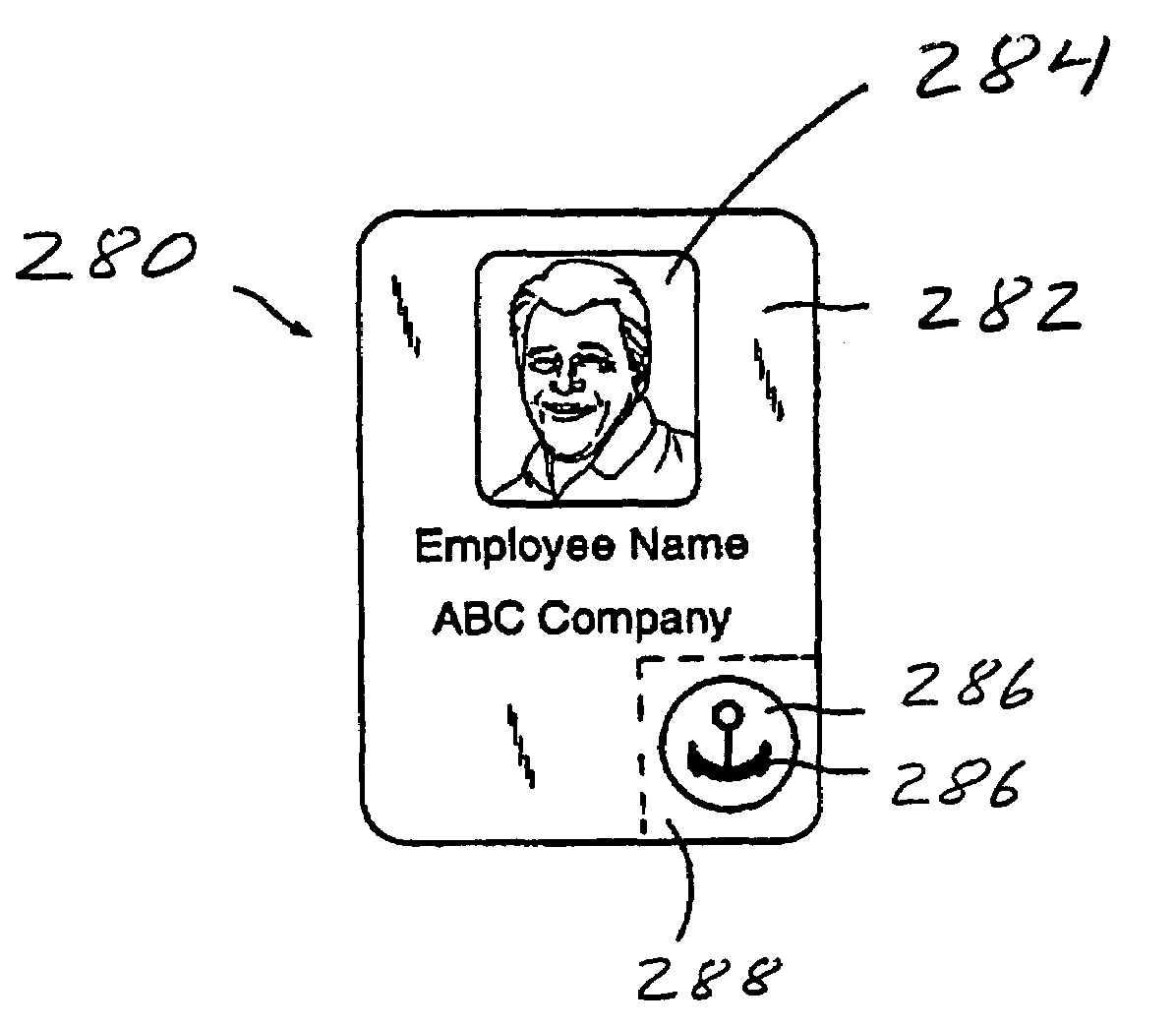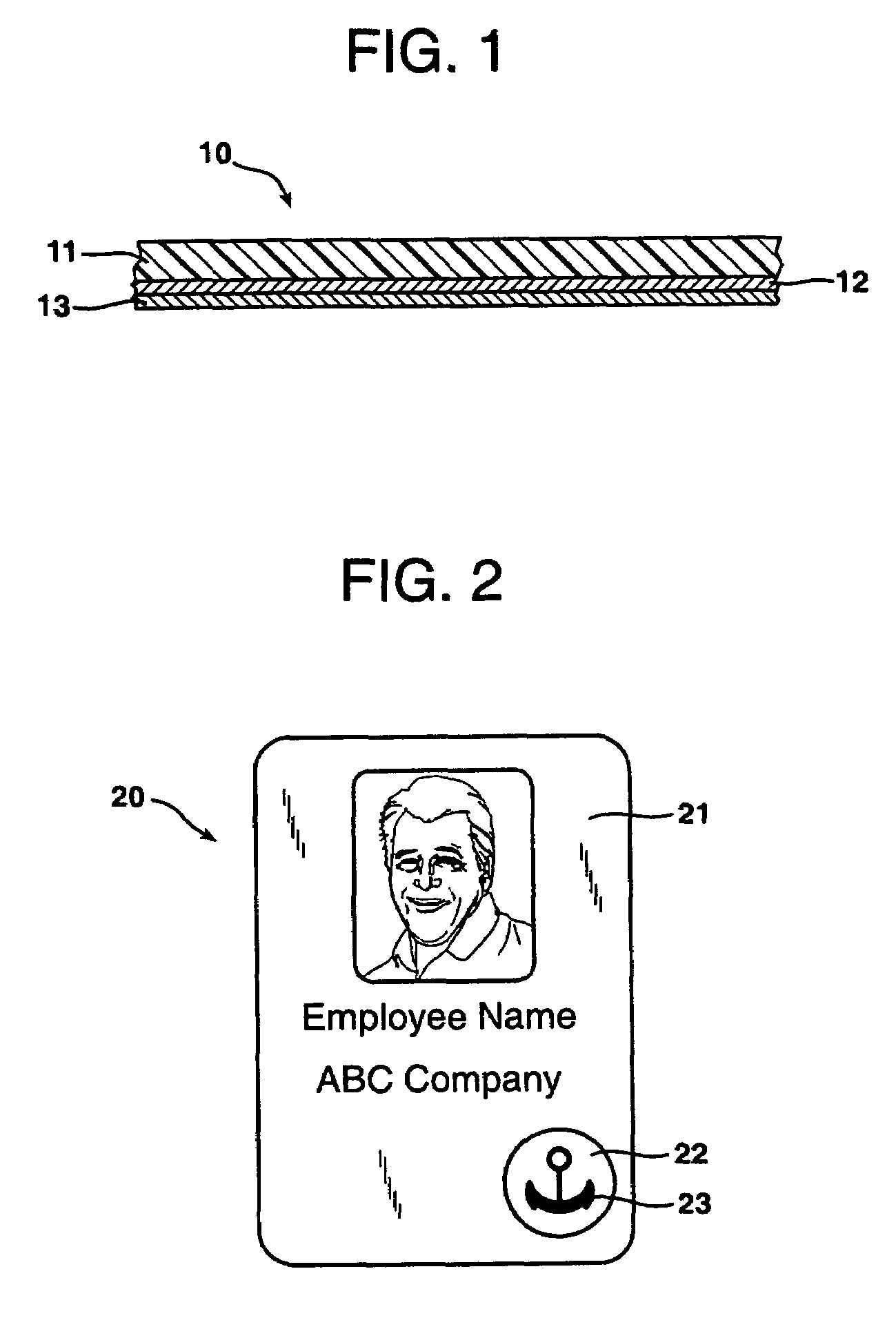Process for visually validating identification badges
a technology for visually validating identification badges and processing methods, applied in the direction of confirming the correctness of markings, static indicating devices, instruments, etc., can solve the problems of inability to update the system, inconvenient security means, and inability to verify the validity of visual identification badges
- Summary
- Abstract
- Description
- Claims
- Application Information
AI Technical Summary
Benefits of technology
Problems solved by technology
Method used
Image
Examples
Embodiment Construction
[0042]As used herein the terms identification badges or identification cards, or words similar thereto, are intended to include all types of identification documents and plastic and paper cards, including but not limited to, credit cards, bank cards, phone cards, passports, driver's licenses, network access cards, employee badges, tokens, fobs, debit cards, security cards, visas, immigration documentation, national ID cards, citizenship cards, social security cards and badges, certificates, identification cards or documents, voter registration cards, police ID cards, border crossing cards, security clearance badges and cards, gun permits, badges, gift certificates or cards, membership cards or badges, tags, CD's, retail promotion cards, consumer products, knobs, keyboards, electronic components, etc., or any other suitable items or articles that may record information, images, and / or other data, which may be associated with a person or brand identity, function and / or an object or ot...
PUM
 Login to View More
Login to View More Abstract
Description
Claims
Application Information
 Login to View More
Login to View More - R&D
- Intellectual Property
- Life Sciences
- Materials
- Tech Scout
- Unparalleled Data Quality
- Higher Quality Content
- 60% Fewer Hallucinations
Browse by: Latest US Patents, China's latest patents, Technical Efficacy Thesaurus, Application Domain, Technology Topic, Popular Technical Reports.
© 2025 PatSnap. All rights reserved.Legal|Privacy policy|Modern Slavery Act Transparency Statement|Sitemap|About US| Contact US: help@patsnap.com



